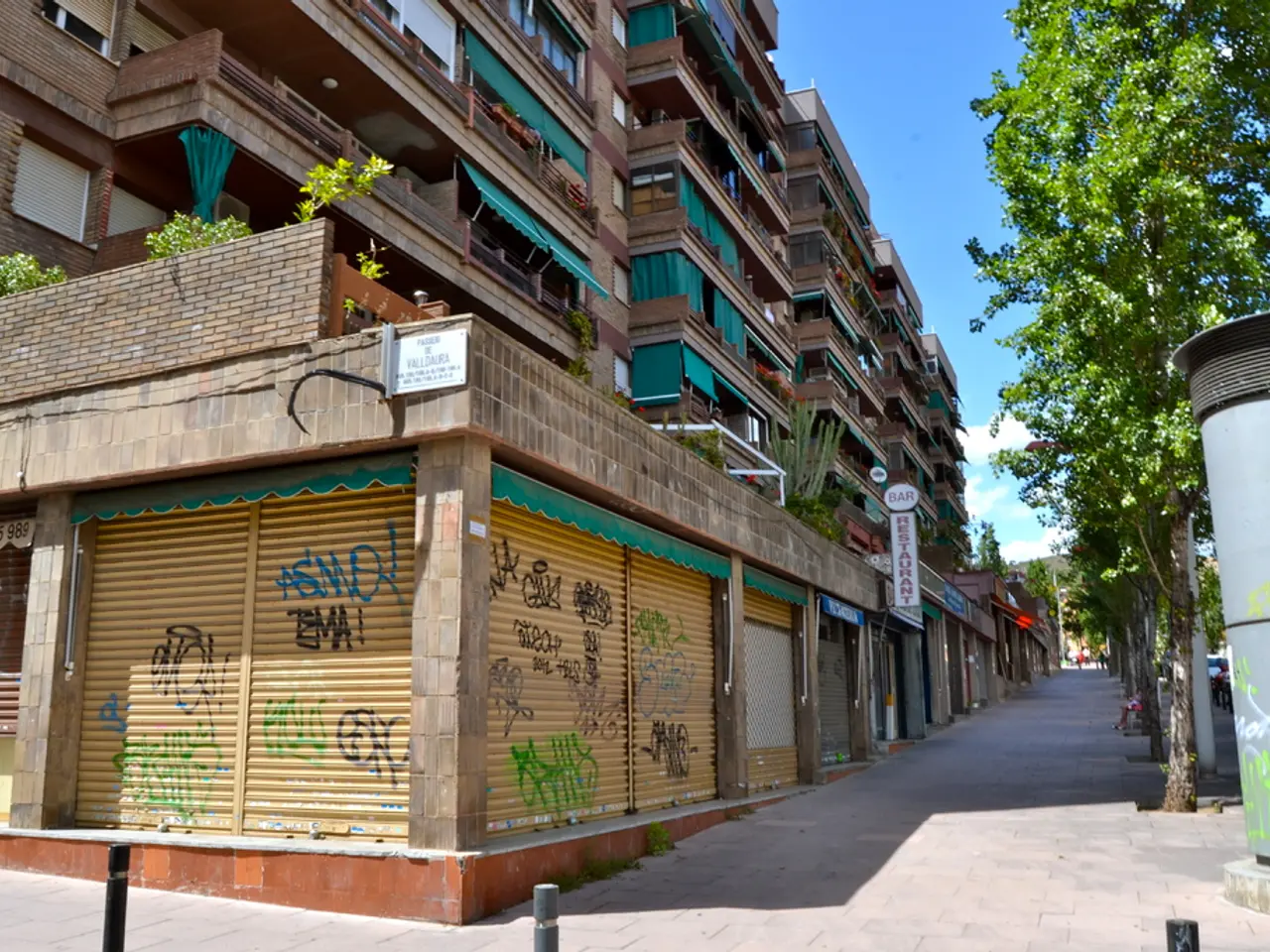Enhancements in green spaces foster psychological well-being
In a groundbreaking study presented at the Landscape Laboratory in Guimarães, researchers have highlighted the importance of accessible, safe, and active green spaces in promoting mental and physical well-being. The study, titled "Impact of Green Spaces on Mental and Physical Health," was attended by Domingos Bragança (Mayor), Adelina Pinto (President of the Landscape Laboratory), Luís Campos (President of the Portuguese Council for Health and Environment), and José Pimenta Machado (President of the Portuguese Environment Agency).
The study followed an integrated public health approach, aligning with the concepts of One Health and Exposome, recognising the interdependence between human health, the environment, and ecosystems, and the cumulative impacts of environmental and social exposures throughout life.
The research found that regular use of green spaces, particularly for leisure activities and moderate exercise, positively influences physical activity levels. More importantly, it revealed that exposure to green spaces through leisure activities and physical exercise, along with the belief that spending time in green spaces positively affects overall well-being, can significantly reduce anxiety, stress, and improve sleep.
Specifically, the study found that maternal utilisation of green spaces for leisure and exercise was significantly associated with reduced perceived stress. Additionally, the belief in green space benefits correlated with lower anxiety and depression levels.
These findings are supported by broader research, which shows that access to high-quality green and blue spaces promotes restorative effects, stress reduction, and better mental health outcomes, including anxiety and depression relief. Moreover, physical activity outdoors, often referred to as "green exercise," enhances mental health benefits compared to indoor exercise alone.
Interestingly, the study also found that while people with higher incomes value green spaces more, they frequent them less, whereas those with lower incomes use these spaces the most.
The study supports Guimarães' Radial Green Strategy, which includes the construction of three concentric green belts within the city and its outskirts. The first of these rings is being created through the "Bairro C" project, a pilot urban regeneration initiative focused on environmental sustainability and connecting green corridors.
Guimarães will have three concentric green belts: one in the urban area and two outside the city, measuring 20 and 42 kilometres, respectively. The outermost ring of the Radial Green Strategy's green belts, when completed, should encompass 74% of the municipality's population.
The study involved 501 residents living near Guimarães' municipal green spaces. Pedro Morgado, from the University of Minho School of Medicine, emphasised that for nature to have a therapeutic effect on mental health, it must be a lived, regular, and active experience.
The study cross-referenced data on proximity, use, perception, and impact on health indicators. Interviews were conducted between March 8th and 24th, 2025, with a total of 17 interviewers.
Guimarães has increased its green area by 95 hectares between 2012 and 2023, now having two large urban parks. The city aims to achieve climate neutrality by 2030, with initiatives such as the PEGADAS project, a municipal environmental education initiative aimed at the school community.
References:
- Maternal mental health study highlighting utilization and belief factors linked to stress, anxiety, and depression reduction.
- Broader evidence on access, exercise, and nature therapy enhancing mental health.
- The Radial Green Strategy envisages Guimarães as the European Green Capital in 2026.
- Guimarães has a plan to achieve climate neutrality by 2030, with initiatives such as the PEGADAS project, a municipal environmental education initiative aimed at the school community.
- Living close to parks showed no statistically significant impact on psychological symptoms or sleep quality.
- Pedro Morgado, from the University of Minho School of Medicine, emphasises that for nature to have a therapeutic effect on mental health, it must be a lived, regular, and active experience.
- How often individuals used green spaces emerged as a key factor in reducing anxiety, stress, and improving sleep.
- The study cross-referenced data on proximity, use, perception, and impact on health indicators.
- Interviews were conducted between March 8th and 24th, 2025, with a total of 17 interviewers.
- Guimarães has increased its green area by 95 hectares between 2012 and 2023, now having two large urban parks.
- Respondents were divided into those living less than or more than 300 metres from green spaces.
- The outermost ring of the Radial Green Strategy's green belts, when completed, should encompass 74% of the municipality's population.
- The study in Guimarães, titled "Impact of Green Spaces on Mental and Physical Health," suggests that regular use of green spaces for leisure activities and exercise can positively influence both physical fitness and mental health by reducing anxiety, stress, and improving sleep.
- The research highlights an interesting discrepancy: while people with higher incomes value green spaces more, they tend to use them less frequently than those with lower incomes.
- The study's findings support the implementation of Guimarães' Radial Green Strategy, which aims to create three concentric green belts within the city and promote environmental sustainability, connect green corridors, and enhance the mental and physical health of its residents.




